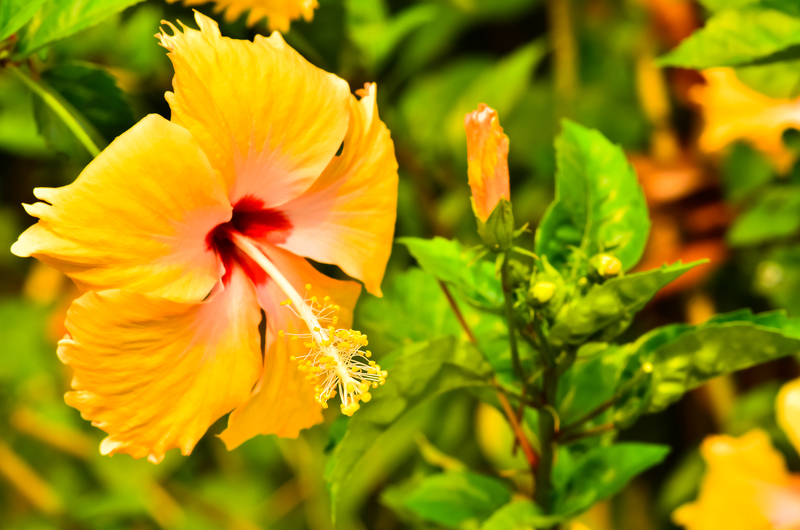Solarization: Using Sun Power to Break Down Stubborn Stumps
Are you grappling with the challenging task of removing old tree stumps in your yard or garden? Traditional methods--like grinding, chemical treatments, or manual excavation--can be labor-intensive, expensive, and harmful to the environment. A powerful, eco-friendly alternative has taken root: solarization. Harnessing the sun's natural energy, solarization uses sun power to break down stubborn stumps, transforming them into manageable, decayed material. In this comprehensive guide, we'll explore how solarization for stumps works, its benefits, step-by-step instructions, and crucial tips for successful results.
What Is Solarization?
Solarization is a simple, yet highly effective, environmentally-friendly method for using solar heat to control pests, weeds, pathogens, and even decompose organic matter like stumps or large roots. Originating in agricultural practices, this method involves covering the target area with transparent plastic to trap the sun's heat, drastically increasing soil temperature and accelerating decomposition.
When it comes to stump removal, solarization creates a miniature greenhouse effect that speeds up microbial activity and the breakdown of the tough, fibrous wood. The process can significantly reduce the physical mass of a stump, making it easier to remove or simply leave to finish composting naturally.

How Does Solarization Work on Tree Stumps?
The science behind tree stump solarization is both fascinating and practical. Normally, decomposition of a stump can take years--sometimes even decades for particularly dense hardwoods. But by utilizing solar power to break down stubborn stumps, you dramatically hasten the process, often seeing visible results in one growing season.
- Heat Trap: Covering the stump and surrounding soil with a clear plastic sheet creates a greenhouse effect, trapping solar radiation.
- Temperature Increase: Temperatures underneath the plastic can soar up to 140?F (60?C) or even higher, especially during peak summer.
- Accelerated Breakdown: The elevated heat levels stimulate the growth of thermophilic (heat-loving) microbes and fungi that break down wood fibers quickly.
- Suppression of Regrowth: The intense heat not only breaks down the wood but also kills off any living shoots or roots that attempt to sprout from the stump.
The result? A decomposed, shrunken stump that can easily be shredded, dug out, or covered with soil or mulch.
Benefits of Using Sun Power to Break Down Stumps
Why choose solarization over more aggressive stump removal methods? Let's examine the compelling benefits:
- Eco-Friendly: No chemical herbicides, harmful fumes, or nonrenewable fuels required.
- Cost-Effective: The main expense is the plastic sheeting--no need for heavy equipment or labor fees.
- Non-Invasive: Eliminates the need for digging up your garden, protecting neighboring plants and soil structure.
- Low Maintenance: Set it up and let the sun do the hard work!
- Pest and Pathogen Suppression: High heat also destroys many soil-borne pathogens and pests residing within or near the stump.
- Suppresses Weed Growth: Kills off sprouting weeds and prevents stump resprouts.
- Improves Soil Health: As the stump decays, it adds organic matter and nutrients back to the soil.
When to Use Solarization for Stump Removal?
While solarization tree stumps is effective in many situations, certain conditions ensure the best results:
- Sunny Climates: Solarization works best in regions with plenty of direct sunlight and high summer temperatures.
- Active Growing Season: Initiate the process in late spring or early summer when sunlight is most intense.
- Accessible Stumps: Best suited for stumps not blocked by heavy tree cover or nearby structures that shade the sun.
Step-by-Step Guide: Solarize Stumps in Your Yard
Ready to harness solar power for stubborn stump removal? Follow this detailed guide to maximize your success:
1. Gather Materials
- Clear Plastic Sheeting: Polyethylene sheeting works best; choose a thickness of 2-6 mils for durability.
- Garden Shears or Saw: For cutting the stump as close to ground level as possible.
- Mulch, Compost, or Manure: (Optional) Adding an organic layer speeds decomposition.
- Rocks, Bricks, or Pins: To anchor the plastic securely to the ground.
- Water Source: A hose or watering can for moistening the stump and nearby soil.
- Gloves and Protective Gear: Always stay safe while working outdoors.
2. Prepare the Stump and Surrounding Area
- Trim the Stump: Use a saw to cut the stump as flush with the ground as possible. The lower to the earth, the more heat the core will receive.
- Remove Debris: Clear old mulch, weeds, stones, and any wood chips around the stump area.
3. Water Generously
- Saturate the Stump and Soil: Moisture is a critical factor for speedy decomposition. Use a hose to thoroughly soak the stump and the soil immediately surrounding it.
4. Add Organic Matter (Optional Step)
Adding a 2-4 inch layer of fresh compost, manure, or rich organic mulch atop and around the stump will encourage beneficial microbes and fungi, accelerating natural decay.
5. Apply the Plastic Sheeting
- Cut the Plastic: Ensure the sheeting completely covers the stump and extends at least 2-3 feet beyond its perimeter in all directions.
- Seal the Edges: Secure the plastic to the soil by weighing the edges down with rocks, bricks, soil, or landscape pins. An airtight seal is crucial for capturing maximum heat.
6. Monitor Regularly
- Inspect Weekly: Check for tears or gaps. Re-secure or replace the plastic as needed.
- Water as Needed: If the plastic is disturbed, re-moisten the stump and surrounding area before resealing.
7. Duration of Solarization
- Optimal Timeframe: Solarization typically requires 6 to 8 weeks of consistent strong sunlight. For tough, dense hardwood stumps, consider leaving the cover on for up to 3-4 months during hot weather.
- Colder Climates: Where sunshine is less intense, the process may take a full growing season (spring through late summer).
8. Check Progress and Final Steps
- Examine the Stump: When you remove the plastic, the stump should feel spongy, soft, or show signs of major rot.
- Removal Options: At this stage, small or medium stumps may be broken up easily with a shovel, pickaxe, or even by hand. For very large stumps, you can repeat the process for further breakdown or allow the decaying wood to compost naturally in place.
Pro Tip: Chopping lines or holes in the top of the stump with an axe or drill before covering with plastic creates more surfaces for microbes and moisture to penetrate, further accelerating decay.
Frequently Asked Questions about Solarization for Stumps
Is solarization effective for every type of tree stump?
Solarize stumps from both hardwoods and softwoods, but dense, oily, or resinous woods (like oak or pine) take longer to decompose. While solarization will hasten the breakdown of all stumps, patience is required for larger specimens.
Can I use dark or black plastic instead of clear plastic?
While black plastic will warm the soil, clear plastic is vastly superior for solarization. Clear sheets trap more solar radiation, driving soil temperatures up faster and higher, and promoting more robust microbial action.
Do I need to poke holes in the plastic for ventilation?
No! For the best solarization results, keep your plastic airtight and without holes. This maximizes the trapped heat and prevents moisture from escaping, creating a warm, moist environment for decomposition.
Is solarization safe for nearby plants?
Solarization is non-toxic, but the high temperatures can damage the roots of desirable plants close to the covered area. If your stump is near shrubs or perennials you wish to keep, consider trimming back the plastic or using shielding boards.
Will rain affect the process?
Occasional rain can actually help by keeping the soil moist. However, if high winds or storms dislodge the plastic, promptly replace and reseal it for continuous solarization.
Best Practices for Tree Stump Solarization
- Start as early in the season as possible--solarization is most effective on sunniest, hottest days.
- Double-layer the plastic for added insulation if your climate is only moderately warm.
- Dispose of decayed stump pieces properly, especially if the tree was diseased. Compost only healthy, pest-free wood.
- Rotate organic layers--refresh compost or mulch atop the stump for ongoing microbial activity.
- Wear gloves when handling decayed wood to avoid splinters and potential fungal spores.
Alternatives and Companion Techniques
For especially massive stumps, combining solarization with other natural decay methods offers synergistic results:
- Fungal Inoculation: Drill holes and insert mushroom spawn such as oyster or wine cap varieties--fungi excel at breaking down lignin and cellulose in wood.
- Compost Tea Drench: Saturate the stump with nutrient-rich compost tea to increase the diversity of microbial decomposers.
- Manual Carving: Chop deep lines or holes into the stump to improve heat penetration and surface area for decay.

Environmental and Soil Health Benefits
By using sun power to break down stubborn stumps, you transform a problematic yard obstacle into a bonus for your soil:
- Organic Enrichment: As the stump decomposes, humus and nutrients return to the earth, improving structure and fertility.
- Habitat Creation: Partially decayed wood can be repurposed for wildlife habitat--beetles, birds, and small mammals thrive in such environments.
- Pathogen Control: Solarization's high temperatures kill off many fungal and bacterial pathogens, making your soil healthier for new plantings.
- Weed and Pest Suppression: The greenhouse effect also destroys weed seeds and insect larvae.
Conclusion: Harness the Power of the Sun for Stubborn Stumps
The next time you face the tough job of eliminating an old tree stump, consider the eco-friendly, low-cost, and highly effective process of solarization. Using solar power to break down stubborn stumps puts nature to work for you--accelerating decay, improving soil health, and avoiding the risks tied to chemicals or heavy machinery.
With just a bit of plastic sheeting and patience, you can let the sun's rays do the heavy lifting, effortlessly transforming a woody obstacle into nutrient-rich soil.
Ready to solarize your stumps? Equip yourself with these practical steps and start harnessing sun power for an easier, greener, and more satisfying stump removal experience.